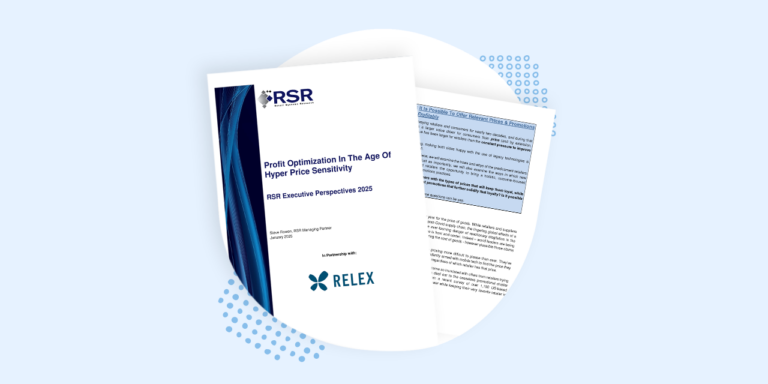How retailers can thrive in price-sensitive times
Mar 6, 2025 • 7 min
The persistent challenges that retailers have faced recently, from supply chain constraints to high inflation, have made pricing a top focus area. We partnered with Retail Systems Research on a report, Profit Optimization in the Age of Hyper Price Sensitivity, analyzing how retailers can re-examine their pricing and promotions to maintain and solidify customer loyalty.
Drawing from a February 2024 survey of 177 US-based retailers and a December 2023 survey of 1,132 US-based shoppers, the report reveals that many retailers lack the technology needed to stay competitive. The findings highlight how and why retailers must overcome organizational inertia and integrate new technology to thrive in the current market and win the loyalty of cost-conscious, discerning shoppers.
Key Takeaways
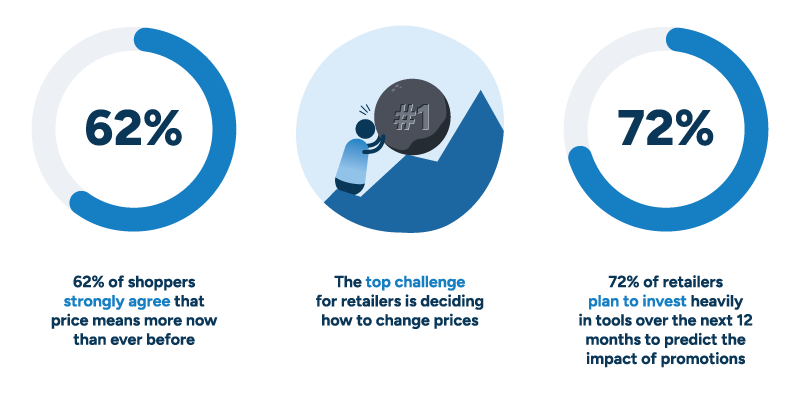
Recognizing opportunities for retailers to deepen customer loyalty
Today’s shoppers prioritize price—62% say it means more now than ever—and are willing to switch stores for better deals. With access to price comparisons online, shoppers can quickly identify retailers that offer the best deals and choose where they shop accordingly. Under these circumstances, customers’ loyalty cannot be taken for granted.
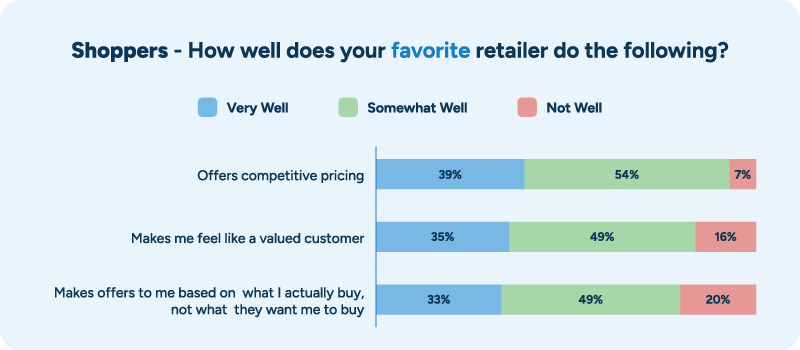
The report’s survey of shoppers revealed that while many felt their retailer of choice did relatively well with pricing and promotions, there was a clear opportunity gap. The findings also showed that most shoppers rated their preferred retailers only “Somewhat Well” rather than “Very Well” in providing relevant value.
In an era of savvy, price-sensitive customers, retailers who pull out at all the stops can turn moderately satisfied customers into truly delighted ones, reducing the risk of losing them to competitors.
The gap between retail priorities and existing infrastructure
Retailers widely acknowledge that technology plays a crucial role when considering how to provide more value to their customers and build lasting loyalty. More than 60% of retailers surveyed in the report identify pricing and promotion optimization as critical to their business’s success.
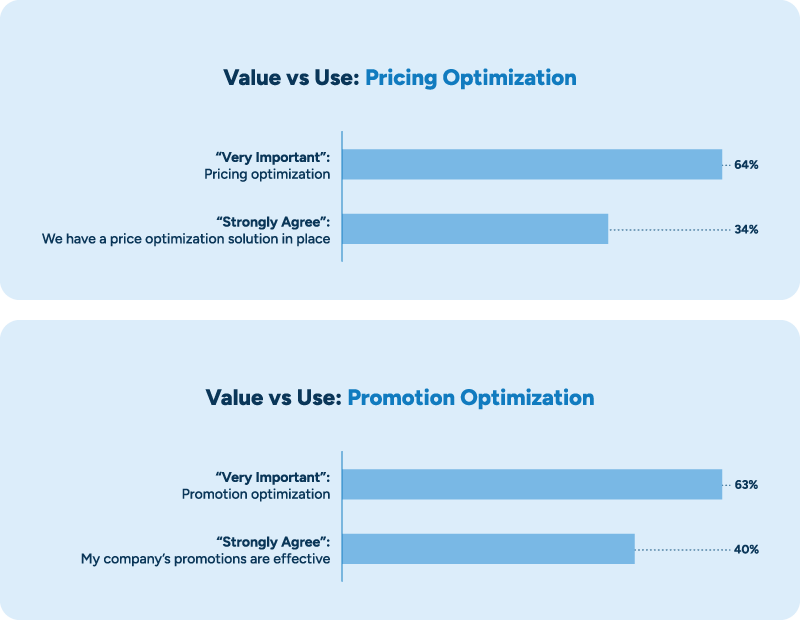
Despite widespread agreement on their business value, only a few retailers have embraced optimization tools. Retailers who invest in today’s cutting-edge, intelligent tools will gain a decisive edge by crafting more profitable, customer-focused pricing strategies and promotions that genuinely resonate with their customers.
Hesitancy to act hinders effective decision-making
Pricing and promotion challenges have traditionally been viewed as intractable problems, mired in complexity with seemingly no clear solution. Despite a stream of advancements in optimization technology that could demonstrably improve business outcomes, this perception has fostered a hesitancy to adopt these new, innovative solutions.

The problem is that inaction leaves existing organizational challenges unresolved, which continues to hamper businesses’ capacity for effective decision-making. According to the survey, retailers reported struggling with numerous operational functions, such as determining optimal price adjustments (42%), selecting the most strategic products for promotions (34%), and accurately predicting the outcomes of these choices (33%).
Modern retail demands sophisticated optimization tools that align pricing and promotion decisions with shifts in demand and evolving shopping behaviors. Investing in specialized technology will help retailers tackle these challenges while enabling data-driven decisions that boost customer loyalty and profitability.
Retailers recognize the need to level up their approach to price optimization
The upside is that retailers are clear-eyed about what needs to change. In fact, the report reveals that the primary motivator driving the adoption of price optimization technology was an awareness of existing problematic pricing practices. The most reported practice –58% of retailers surveyed – was excessive use of discounts, closely followed by 56% of respondents citing short-sighted pricing decisions and releasing price adjustments in the real world before they’re validated.
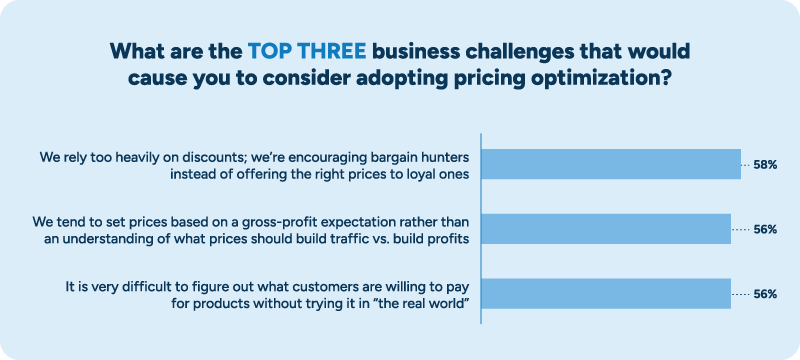
Retailers clearly understand the issues with relying on outdated practices. Instead, they need to take more calculated approaches:
- Roll out targeted discounts to the right shoppers at the right time in the right stores.
- Introduce strategic pricing by lowering costs on key items that attract shoppers and drive traffic while increasing margins on other products to raise profits.
Delivering better value to customers requires investment in new technology
Recognizing that strategic approaches require new solutions, many retailers have shared that they plan to deploy a wide range of advanced promotion tools in the near future. Over 70% of retailers surveyed intend to invest in promotion forecasting in the next 12 months, while nearly 60% aim to deploy a solution that provides smart recommendations for promotions within a year.
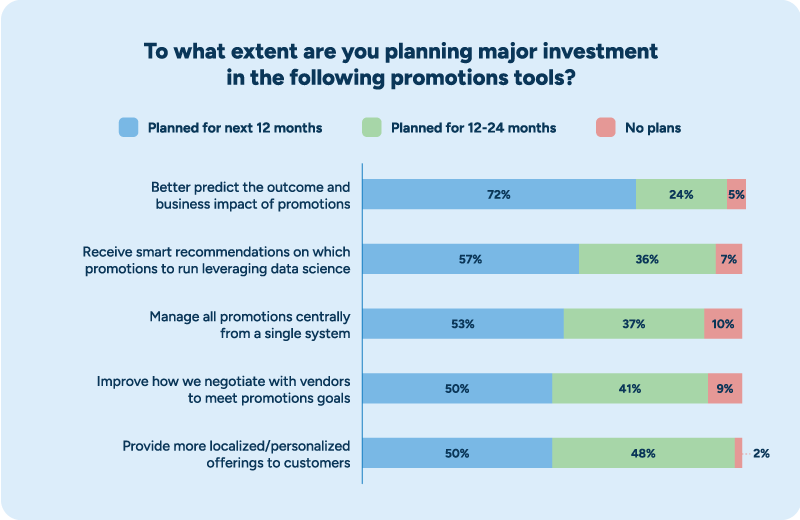
The report underscores the advantage of partnering with external technology providers rather than building in-house solutions. This approach shields retailers from the substantial costs and ongoing resource allocation required to maintain internal software.
Beyond cost and resource savings, external solutions provide quicker deployment and smoother implementation. Specialized providers offer market-ready solutions built through extensive research and development that are battle-tested, reputable, and highly configurable. Their rules-based management eliminates coding requirements, allowing non-technical teams to modify and scale the system with minimal resources and IT support.
How retailers can prepare their organization for technological transformation
As the report states: “The greatest impediment to adopting price optimization is organizational inertia.” Retailers can overcome internal resistance and embrace new technology by following these key steps:
- Ally with a powerful executive champion who can clear organizational roadblocks and counter any resistance to progress.
- Accept that while data issues are legitimate challenges, flawless data isn’t a prerequisite for moving ahead. By implementing new tech with data cleansing capabilities, businesses can overcome this roadblock in the future.
- Accelerate implementation by working with seasoned specialists who can provide guidance throughout the complexity of system rollout. These experts can also train and mentor internal teams to master the new systems.
- Identify leading tech providers with deep industry and technological expertise, with proven success for various companies.
A deeper dive into profitable approaches to strengthen customer loyalty
While price dominates consumer behavior, retailers still have opportunities to build loyalty through strategic pricing and promotions. Though there is an understanding of technology’s potential to enhance decision-making and meet customer expectations, inertia has delayed adoption. However, forward-thinking retailers have pushed through this barrier to change with plans to implement optimization tools that enable them to be more dynamic, profitable, and customer-centric—essential qualities for thriving in today’s competitive retail market.



